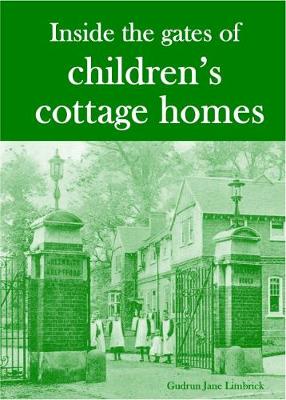Remand Homes
The question of what to do with children who committed crimes, or who were thought likely to commit crimes, has been a part of children's homes history since the 18th century. While children found guilty by a court were originally sent to prison with adult offenders, there came a growing belief that this might not be the best environment for them, not least because it was feared that the adult prisoners would guide them further into a life of crime.
For this reason, reformatories, or reform school were established. The Philanthropic Society reform schools were a key example of this, having started taking in children otherwise destined for prison in 1792.
More on reformatories here.
Industrial Schools were established for those children who it was thought were in danger of becoming criminals, perhaps because of the crowd they were in; maybe their own behaviour; or perhaps because of perceived family influences.
More on industrial schools here
In practice, the difference between reform schools and industrial schools blurred as did their admission policies.
In the 1930s, efforts to modernise the system brought in approved schools and used the term 'remand homes' as places where young offenders were held (the original remand homes had been temporary accommodation for those awaiting transfer into a reform school).
While most reform school and industrial homes had been set up by philanthropists or independent societies, remand homes tended to be in the hands of the newly formed local councils.
Remand Homes
|
Ashbank |
The Council of the County Borough of York |
|
Ashbourne Lodge |
The County Council of Hampshire |
|
Ashley House |
The County Council of Nottinghamshire |
|
Beechfield |
The County Council of West Sussex |
|
Beechwood |
The Council of the County Borough of Nottingham |
|
Boyles Court |
The County Council of Essex |
|
Bramerton Lodge |
The County Council of Norfolk |
|
Brooklands |
The County Council of Somerset |
|
Burford |
The Council of the County Borough of Manchester |
|
Crick House |
A Joint Committee of the County Council of Glamorgan, the County Council of Monmouthshire and the Council of the County Borough of Newport |
|
Cumberlow Lodge |
The Council of the London Borough of Lambeth |
|
Derwent House |
The Council of the County Borough of Liverpool |
|
Enderleigh |
The Council of the County Borough of Nottingham |
|
Farndale Road |
The Council of the County Borough of Teesside |
|
Field House |
The Council of the County Borough of Birmingham |
|
Forhill House |
The Council of the County Borough of Birmingham |
|
Fullaford House |
The County Council of Devon |
|
Glen House |
The Council of the County Borough of Portsmouth |
|
Green Acre |
The County Council of Kent |
|
Harrietsham |
The County Council of Kent |
|
Heyford Hill House |
The County Council of Oxfordshire |
|
High Bank |
The County Council of Cheshire |
|
Horfield Lodge |
The Council of the County Borough of Bristol |
|
Little Health Lodge |
The Council of the London Borough of Newham |
|
Middlesex Lodge |
The Council of the London Borough of Hillingdon |
|
Mill House |
The County Council of Cumberland |
|
Milton House |
The Council of the London Borough of Croydon |
|
Newport House |
The County Council of Essex |
|
Oxenden House |
The County Council of Bedfordshire |
|
Parklands |
The Council of the County Borough of Plymouth |
|
Penshaw House |
The County Council of Durham |
|
Pentlands |
The County Council of Surrey |
|
Ravenscroft |
The County Council of Lancashire |
|
Red Hatch |
The County Council of Hampshire |
|
Red Sands |
The County Council of Cheshire |
|
Rheanfa |
The Council of the County Borough of Swansea |
|
Rose Hill |
The Council of the County Borough of Manchester |
|
Saltwells |
The Council of the County Borough of Dudley |
|
Saxon House |
The County Council of Lincolnshire, Parts of Lindsey |
|
Seaham |
The Council of the County Borough of Sunderland |
|
Shirecliffe House |
The Council of the County Borough of Sheffield |
|
Slynedales |
The County Council of Lancashire |
|
Spring Cottage |
The Council of the County Borough of Kingston-upon-Hull |
|
St. Nicholas House |
The Council of the London Borough of Enfield |
|
Stamford House |
The Council of the London Borough of Hammersmith |
|
Stonepound House |
The County Council of East Sussex |
|
Sully |
The County Council of Glamorgan |
|
The Cedars |
A Joint Committee of the County Council of Derbyshire and the Council of the County Borough of Derby |
|
The Moss |
The Council of the County Borough of Sheffield |
|
The Rise |
The Council of the County Borough of Cardiff |
|
The Wissage |
The County Council of Staffordshire |
|
Thornbury House |
The County Council of Oxfordshire |
|
Tong Park House |
The County Council of Yorkshire, West Riding |
|
Watkin Lodge |
The Council of the County Borough of Grimsby |
|
Welland |
The County Council of Worcestershire |
|
Westwood Grange |
The Council of the County Borough of Leeds |
|
Whinmoor |
The Council of the County Borough of Leeds |
|
Wood End |
The County Council of Lancashire |
|
Woodlands |
The Council of the County Borough of Leicester |
|
Woodside |
The Council of the County Borough of Kingston-upon-Hull |
|
Woolton Vale |
The Council of the County Borough of Liverpool |
This list is taken from The Cessation of Approved Institutions (Remand Homes) Order 1973 schedule
https://www.legislation.gov.uk/uksi/1973/637/schedules/made
The 1970s saw the end of remand homes, with an Act of Parliament used to close them officially - The Cessation of Approved Institutions (Remand Homes) Order 1973

LOOKING FOR RECORDS?
As these were council-run homes, you can make a subject access request to try to trace your records. Please visit this page for details.







